
Travel
What to see in the centre of Lisbon?
Destinations
Joanna Horanin
Hi, I'm Joanna, the author of The Blond Travels. In the worlds of Thailand and Portugal, I feel like a fish in water - and it's no coincidence! I've been exploring Thailand for over a decade, and I've settled in Portugal for 6 years now. My mission is to support Dreamers - just like you - in discovering these fascinating countries and helping those in love with them find their own place on Earth, preferably for good! Let's uncover these unique corners of the world together.
Are you going to Lisbon for a short holiday? Do you want to see the best places? Look no further. In this article I will show you the most interesting places to see in the centre of Lisbon.
I have been living in Lisbon for quite a while now and I don’t go to the centre as much as before, but whenever someone asks me what to see and do in the capital, I tell them to start from the main points. They are the best start for any first-time visitor.

The essential guide for a trip to Lisbon. This handy ebook guide includes everything you need to know and see in Lisbon. Discover the best sights, restaurants, cafés and accommodation in the city. Make the most out of your trip! Find out more
The centre of Lisbon is colourful, loud, chaotic, but also really beautiful. Here you can walk around, find out more about the history of the city and take pictures of pretty buildings. Read on to find out more about what to see in the centre of Lisbon.
In this article I mention places located near the river. If you’d like to know more, head to the articles about Alfama and Bairro Alto.

If you want to really see the best spots in the city, you can miss the very centre of it. Here you will learn the history, admire the best of the capital and (probably) fall in love with the magnificent, lively streets.
Praça do Commercio
Praça do Commercio is the most important place in Lisbon. In the 18th century it was the home of the most luxury king’s palace, but it was destroyed by the tsunami.
Later on, the square was used as a parking lot and only recently it has been converted into a tourist attraction and the symbol of the city.
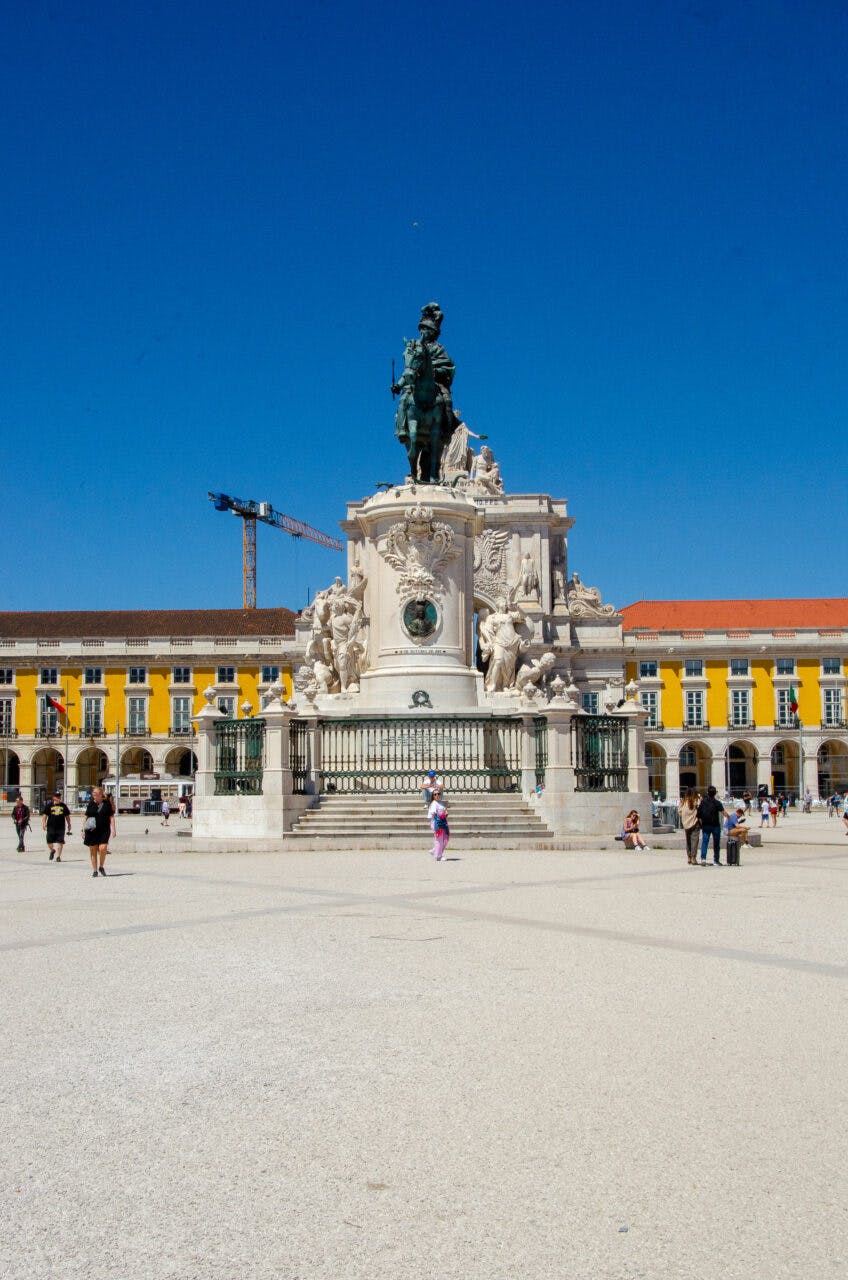
In the middle stands a monument of the king José I, who sits on a horse and crashes snakes on its path.
Take the time to walk around the square, under the roofs of the pavilions. The corridors are amazing and you’ll find some nice bars and restaurants. There are a couple of attractions, too. Visit the Lisboa Story Centre and Beer Museum to find out more about the city and try out some kraft beers.
These places are worth visiting with a guide. Try out GetYourGuide, who have English-speaking guides that will show you the best attractions and tell you all about Lisbon and Portuguese culture.
Cais das Colunas
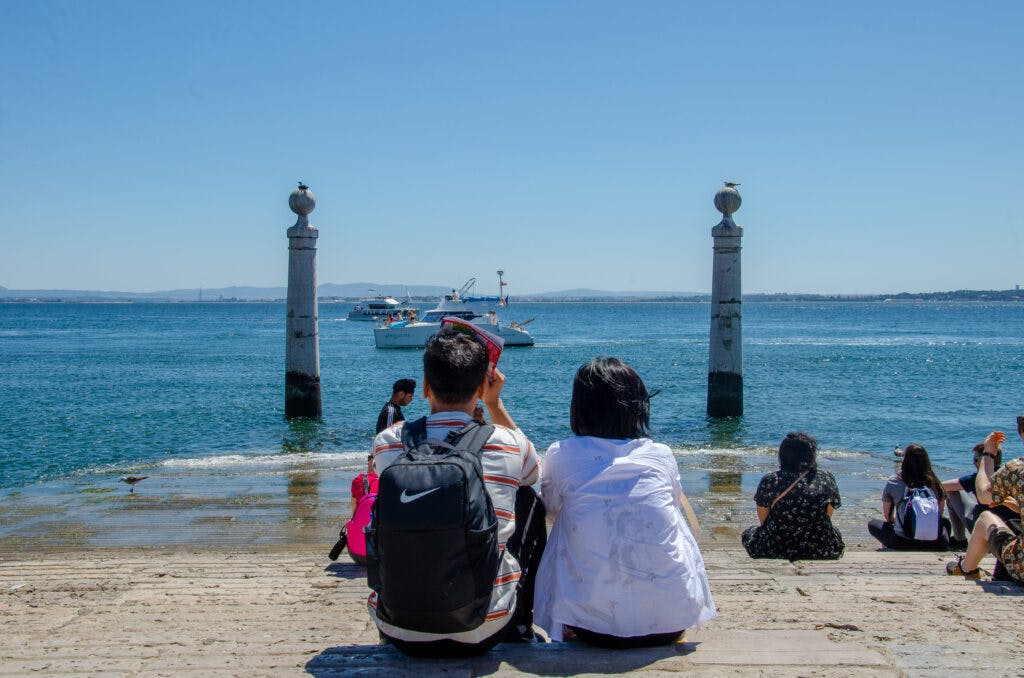
Once it was the stop point for ships that brought and took all kinds of goods. Today it’s a place for chilling, relaxing and taking nice photos.
It’s attracting at any time of the day, but remember that at noon, until around 4pm it might be quite hot in the Summer as there is no shade around.
Arco da Rua Augusta
The entrance to the city is marked with a huge arch – Arco da Rua Augusta. It was built to commemorate the spirit of the locals and their bravery after the earthquake and tsunami in the 18th century.
The arch is huge and the sculpture on the very top – the alegory of glory – is around 7 metres high. Except her, the artist placed Amazon as bravery and reason as Jupiter.
You can climb on the top of the arch and admire the square from the very top. The entrance is located just after you cross under the arch, on the right had side and costs 3 Euros per person.
Rua Augusta
One of the most famous and wonderful streets in Lisbon. In the Summer season it is quite crowded, but take a walk along it anyway.
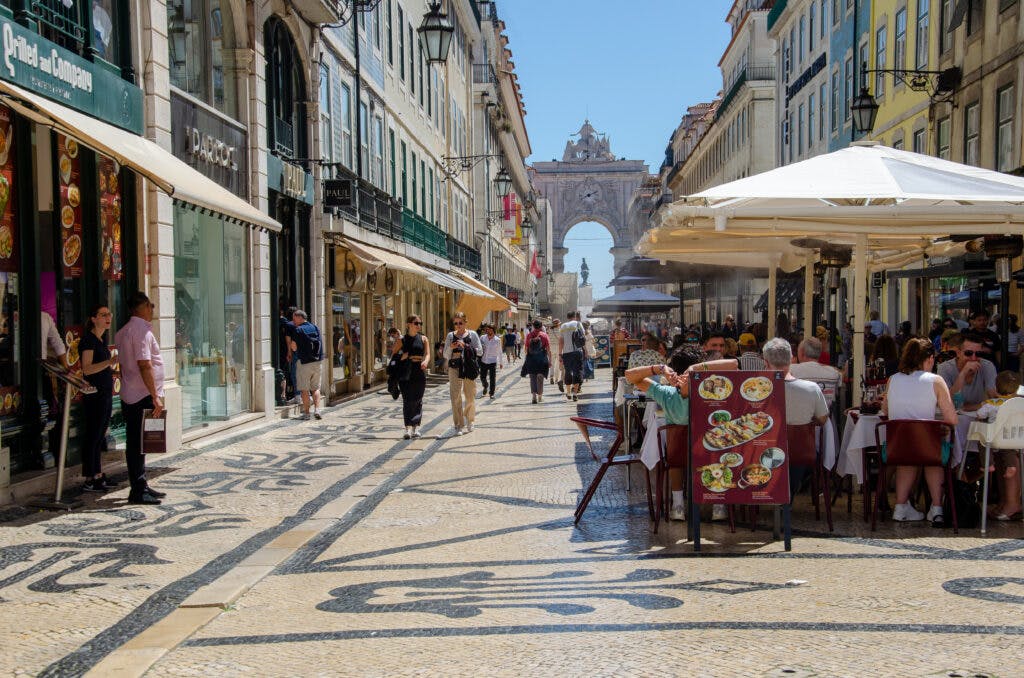
Here you’ll find bars and restaurants as well as souvenir shops. You can also eat a pastel de nata here and other Portuguese specialities.
Santa Justa Lift
Santa Justa connects streets located below and above. It was built to make it easier for the locals to move around, but now it’s a tourist attraction.
If you enter the lift at the main entrance it will cost you 5.30 Euros, but you can do it cheaper by going through the side of Convento do Carmo, walk around the church and go through the Bellalisa Restaurant.
Rossio Square or Praça de Don Pedro IV
The Rossio Square is beautiful. You will see it if you go up Santa Justa Lift.

The place was created in the 13th century, when Lisbon started to grow. At first it was inhabited by the lower class.
After the earthquake in the 18th century the square was totally destroyed. It was an opportunity to change it into something a bit more iconic. The architects built characteristic homes around it that you can admire till today. In the 19th century calçada portugesa – the small tiles – were added which pattern reminds us of the waves on the river Tagus.

Explore your next holiday destination at your own pace with a rental car. Hit the open road and discover hidden gems and off-the-beaten-path destinations. Rent a car with Discover Cars at the best market rates!
In the middle of the square stands the monument of Don Pedro IV. The legend says that the statue was supposed to be placed in Mexico and resemble the King of the country – Maximilian. However, he had been killed before the monument was finished. So not to waste the work, the statue was transported to Lisbon and turned into one that commemorates the Portuguese king.
The Rossio Station
The Rossio Station is a modern train station, which is not really a huge attraction inside. Just take a look at the building from the outside. The facade is beautiful.
At the entrance you will see an empty spot. Once before it was a space where a sculpture of the youngest Portuguese king was – king Sebastian. But, one night, a drunk young man wanted to take a selfie with it and knocked the statue down. It shattered to pieces and since then the space has been empty.
Praça da Figueira
What to see in the centre of Lisbon? Another square, of course. It’s not the most beautiful place, but come here to admire the famous Lisbon trams.
There are a couple of interesting places around, including the Dolls’ Hospital and Casa das Bifanas, where you can eat some traditional Portuguese sandwiches.
Ginja in A Ginjinha
Ginga or ginjinha is a traditional Portuguese liqueur made out of cherries and aguardente, which is made out of sugar cane.

You can try it in many places in Lisbon, but the most traditional are located around the centre of the city. Go to A Ginjinha, which is a small shop where for a few Euros you’ll be able to drink like a local…Well, almost because traditionally it should be drank at the counter while talking to the salesman. Today, however, it’s packed with tourists and there is no space for a chat. It’s still a cool place to visit though.
Order the shot, take it outside and drink it there. After that, give the glass back.
Casa do Alentejo

This beautiful place was created in the 17th century. It was the residency of the family of Paes de Amarral. In the 20th century the family moved out and the building was turned into the first casino in Lisbon.
In 1932 the place was changed into a centre for people from Alentejo region – hence the name.
Casa do Alentejo has beautifully decorated rooms, resembling those that you can see in Arab countries.
Upstairs you can see some few more halls and eat a nice meal at the beautiful restaurant.
The São Domingo Church
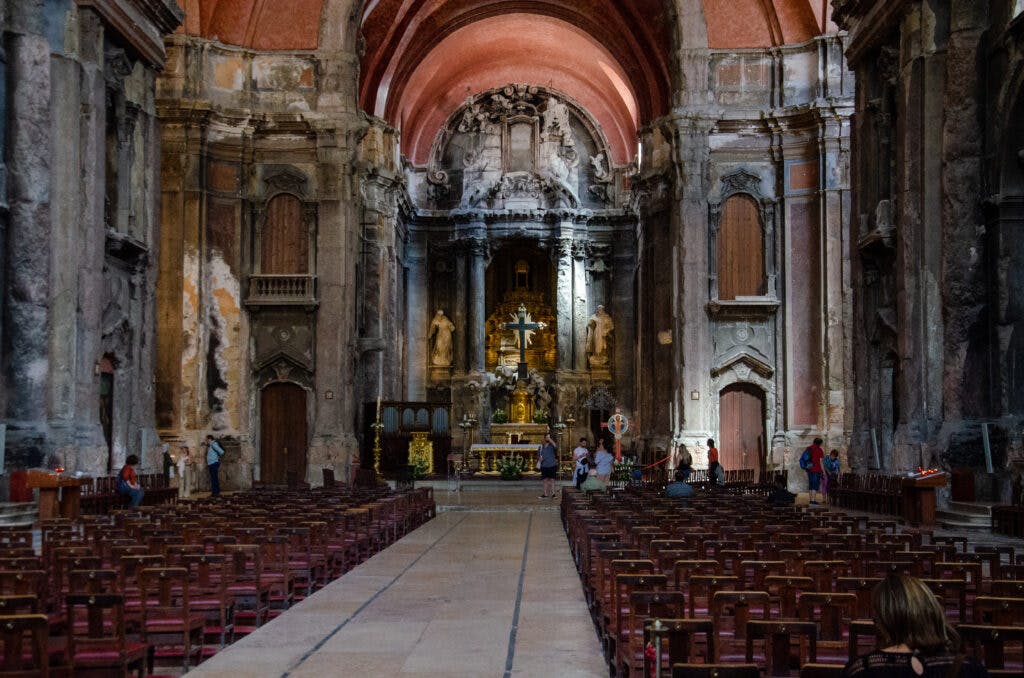
A church that despite its location is quite often missed by many tourists.
The building was restored after the 18th century earthquake, but then it was burnt in a fire and never restored again. You can see melted sculptures around the walls.

One app, all things money. From easy money management, to travel perks and investments. Open your account in a flash.
Get a free accountTake a ride on the tram number 28
Time for a short ride. The 28 tram looks like he was transported here from the past. It will take you all around the city, through the most famous places.
Avenida da Liberdade
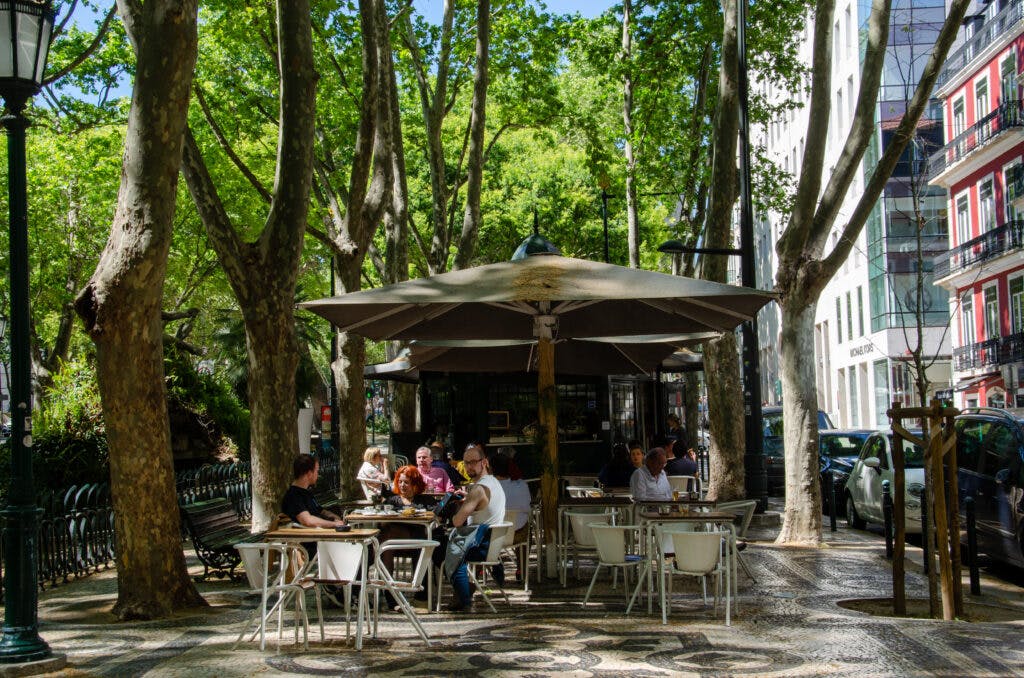
The beautiful, green Avenida looks stunning during sunny days. Walk along the walkways and stop for some wine at one of the kiosks.
Many, many museums

The centre of Lisbon is filled with interesting museums. Head to Lisboa Story Centre, or the Fado Museum to find out more about the culture and history of the country and the city.
What else is there to know about visiting the centre of Lisbon? Here is some information.
How to get there?
There are plenty of transportation option around the centre of Lisbon. You can take a metro and get off at Baixa Chiado, Rossio or Terreiro do Paço.
You can also take a tram or a bus.
Uber or Bolt are popular in Lisbon and very affordable.
Check more information about transportation in the city here.
How to see the most of the centre of the city?
You can do it on your own. Just get lost in the city streets. Do it slowly and don’t rush. But, if you want to find out more about Lisbon and check more places in the centre, then hire a guide. I recommend GetYourGuide, which offers local professional guides and exciting trips.
Safety
Lisbon is safe in general. Just like in any big city, mind your belongings and don’t leave them unattended.
In the centre of Lisbon you will meed ‘dealers’. They will offer you drugs, but don’t be fooled. These are just teas, vitamins or flour sold to you for a very high price. Just don’t stop, walk away and say no to those that will try to sell it to you.
Don’t forget your insurance. Whenever you go abroad, you should have good policy. I recommend SafetyWing or World Nomads – the best insurance for digital nomads and long-term travellers.
What to take?
In the Summer Lisbon is very hot, so take light clothes, but something with long-sleeves will also be useful as nights might be cool.
Comfortable shoes are a must. Lisbon is very hilly. I recommend these amazing trainers from Tropicfeel, which I wear every time I go sightseeing.
Where to stay in the centre of Lisbon?
The centre of Lisbon is very busy, so check the reviews of the places you want to stay at. It’s better to stop somewhere a bit away from the main points as it is more likely it will be quiet.
Here are my recommendations:
Where to eat?
There are plenty of places to eat around the centre of Lisbon. Stop at Casa das Bifanas for some sandwiches, go for a proper meal to Uma Restaurant and try out one of tascas.
What else is there to see in the centre of Lisbon?
As mentioned before, in this post I focussed on the spots located below the hills. You can easily add the streets of Alfama and Bairro Alto to this. I’d head to the direction of Cais do Sodre as well.
If you want to know more about visiting Lisbon, check out my guide to the city, which is perfect for those visiting it for the first time.
I hope I helped you with planning your visit to the capital and answer the most burning questions about what to see in the centre of Lisbon.
If you have any questions, please leave a comment.